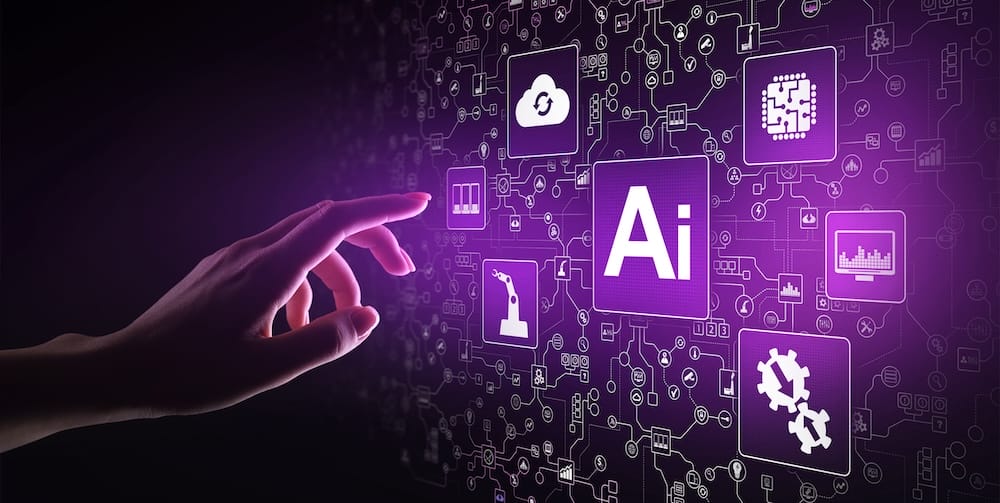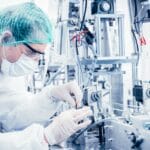Artificial intelligence (AI) is slowly making its way into people’s daily lives, and is poised to transform industries including healthcare, offering new ways to diagnose, treat and monitor patients. Today, 40% of US adults use generative AI tools to do everything from suggesting recipes to writing emails. In the workplace, AI is becoming embedded into people’s working habits: more than half of employees (56%) are using AI tools and 81% believe these tools boost their productivity. Business leaders are adopting AI tools equally rapidly, with 78% having deployed AI in at least one business function. The impact on industries such as healthcare is beginning to be felt today, but will be hugely significant over the longer term, with new technologies such as radar-based monitoring helping to ‘feed’ AI with useful data to improve healthcare outcomes.
The reason AI is so powerful in healthcare is due to how AI works. It allows software to perform ‘human-like’ tasks such as problem-solving and decision-making: which is driven by the software’s ability to analyze large amounts of data. The capabilities of AI are down to using machine learning (ML) and deep learning (DL) to analyse data, spot patterns and drive performance. In machine learning, algorithms ‘read’ large amounts of data, learn from it and predict, while deep learning uses layered artificial neural networks to mimic the human brain, learning and making decisions by itself.
In the data-rich space of healthcare, AI is incredibly powerful, understanding patterns in everything from X-rays to sleep analysis, and offering insights and recommendations to help people improve their lives.
Transforming healthcare
Yet AI is already transforming the healthcare industry, in everything from how doctors diagnose patients to how conditions are monitored. It is helping the healthcare industry move beyond manual, time-consuming processes for everything from analyzing X-ray results to more personalized approaches to medicine. AI is helping to automate processes, at the same time as offering data-driven insights to human clinicians, meaning they are freed for higher value tasks and can deliver for patients.
Deep learning models are already delivering results in medical imaging and diagnostics, sifting through large amounts of radiology scans faster than any human clinician, and helping to detect cancer earlier. Predictive analytics also play an important role, helping to spot conditions such as heart disease and diabetes in their early stages and enabling medical professionals to intervene early. Natural language processing (NLP) is becoming essential in dealing with large amounts of electronic health records and medical records, helping clinicians to interrogate large datasets in natural language, which cuts diagnostic errors and helps to personalize treatment plans. Importantly, AI is also being integrated with advanced sensor technologies to supercharge non-contact health monitoring, offering new ways to track and understand conditions in real-time.
For individuals seeking a natural supplement for blood sugar control, our GlucoTrust review offers valuable insights.
Monitoring sleep
AI is helping to unravel the mysteries of sleep in a less cumbersome way than was previously possible. Sleep centers are turning to radar to monitor patients in a contactless way, rather than connecting patients to large numbers of wires, as in a traditional polysomnography (PSG) test. In normal PSG tests, patients can find it difficult to actually fall asleep due to the number of wires attached, and the fact they are in a strange environment. This means that the data that comes from the test may be less valuable, as the test itself is changing the way patients sleep.
A new 60GHz radar device detects the tiny movements caused by breathing during sleep, and then an AI algorithm assesses this breathing data to analyze how long patients sleep for, when patients go to bed and get up, and the presence of sleep apnea. AI transforms this raw data into sleep scores which clinicians can use to provide estimates of sleep efficiency. Deep learning distinguishes between different sleep stages (waking, rapid eye movement (REM) sleep and non rapid eye movement (NREM) sleep), converting the raw radar signals into a clear picture of sleep stage sequences. This allows the system to assess sleep quality overall, and identify and warn of potential health issues.
The AI-radar system potentially has other health applications, with analysis of respiratory patterns also useful in detecting respiratory conditions such as pneumonia, asthma and chronic obstructive pulmonary disease (COPD). Sleep pattern analysis could also be helpful in monitoring mental health conditions such as post-traumatic stress disorder, depression and anxiety.
The future of AI in healthcare
AI is only going to grow in importance in the healthcare sector, and innovative technologies such as radar will work alongside AI to deliver for patients. Using deep learning and other advanced AI technologies, radar-based scans of patients can help clinicians not only to understand sleep disorders, but also offer insights into other conditions. AI is helping to create a new generation of medical diagnostics and monitoring, with IoT-based healthcare platforms working alongside AI algorithms to deliver remote health management and personalized treatment plans. Simply put, the future of healthcare will be powered by AI.

Jae-Eun Lee
Jae-Eun Lee is the Co-CEO of bitsensing, a pioneer in advanced radar solutions with applications across autonomous driving, connected living, smart cities, heath tech, and beyond. Prior to founding bitsensing, he was a Senior Research Engineer at Mando Corporation, a leading global Tier 1 OEM and supplier of automotive components to leading manufacturers such as GM, Ford, BMW, Hyundai, and KIA. During his time there, Jae-Eun was the first in South Korea to develop a 77GHz ADAS radar and lead its mass production of 10 million units, establishing his reputation as a leader in the global automotive-grade radar technology industry. He holds a PhD in Electrical Engineering from Seoul National University and a Master’s degree in Electronic Engineering from POSTECH.







